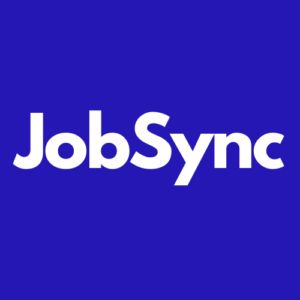Be the first to know when we have an announcement. Sign up for our newsletter!
Does anyone else have their popcorn out? Workday has found itself in an unlikely, rather confusing, and super uncomfortable lawsuit. And the outcome could impact every employer and any recruiting software vendor.
To catch you up, Workday is being sued by a candidate who claims the Workday software and the AI technology powering it are the reason why he, an over-40, disabled African American, has not been able to secure a job even after applying to 80-100 different positions. Many of those roles were with companies that utilize Workday. In its defense, Workday has filed to have the case dismissed, arguing that the associated law does not apply to them.
The EEOC has shown support for the plaintiff by filing an amicus brief stating that the plaintiff has pleaded his case adequately that Workday is operating as an employment agency by blocking his ability to gain employment. Considering the question of whether or not employment software should be held to the same standards as an employment agency and/or the employer is an extremely important aspect of this case.
It will impact the entire industry if the case is allowed to move forward because employment agencies, like employers, cannot discriminate against protected classes. On the surface, this brief appears to be a material deviation from the stance that the EEOC has previously taken, stating that the employer is liable for the outcomes of the hiring practice. In addition, as early as March of 2024, the EEOC was still training and using training materials that make it clear that software vendors are not responsible for hiring outcomes.
The issue at hand is who is responsible for discrimination when companies leverage technology that is or could be biased. Does that create a legal loophole in which no one is responsible? The judge is asking– what do we do in the age of AI companies, where decisions are being made that the user, in this case, the employer, is blind?
And, plot twist, it’s not just Workday in the hot seat. Aon Consulting is facing its own lawsuit from the ACLU due to its claim that its hiring tools are ‘bias-free.’ How can a company possibly know that their AI tools are without bias, now and once inserted into a company with new data, users, and other material unknowns? The marketing teams of large recruiting services and software companies will quickly find themselves in a regulated world that most are unfamiliar with. With new rules and guidelines on what is possible to say in the market.
Compounding the problem for all those looking to leverage AI, there are more and more state laws establishing parameters for companies developing and utilizing AI in their practices. One of the more notable laws out of Colorado focuses on high-risk consumer activities, which include employment practices. This far-reaching law, which companies have until early 2026 to implement, requires notification to consumers of such AI practices and the ability to appeal, including via human oversight, any adverse decision coming out of an AI solution. This could mean every single candidate that applies for a job that doesn’t get hired would have the legal mechanism to force a manual review.
All of these laws and lawsuits drive toward hiring transparency, irrespective of the use of AI, automation, or old-school human power—any of which can be riddled with bias. But silence with zero transparency opens the door for candidates and other participants to fill in the gaps of what is happening in the space. Companies have forever hidden behind the walls of their hiring process to keep the decision-making process hidden from the participants in the process.
But ‘transparency’ isn’t as cut and dry as it seems. As more candidates apply for jobs using AI or bots, companies are seeing more applicants who need to be dispositioned, and budgets are decreasing as the Great Hesitation rages on. Recruiting teams need more automation and stress-tested ethical AI tools—a task easier said than done.
Interest in AI has had a meteoric rise in the last two years – just peering into Google Trends shows how much everyday users are seeking information on AI and AI tools:
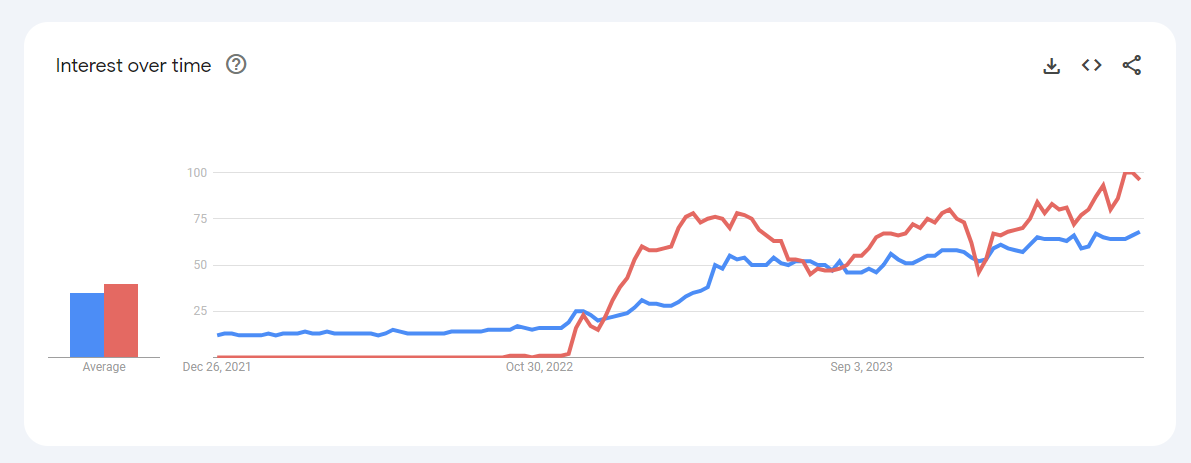
And adoption has followed:
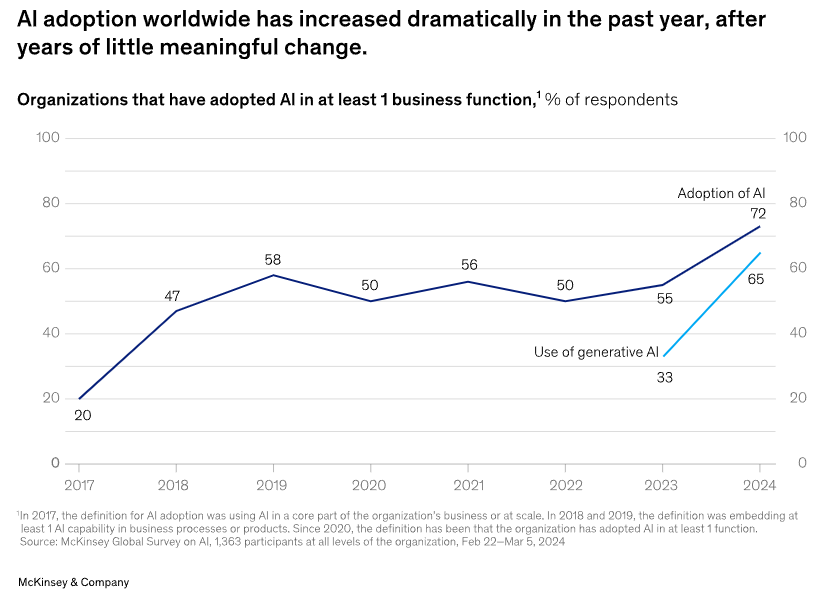
However, investment in AI companies lags behind that interest, cooling significantly in the last year.
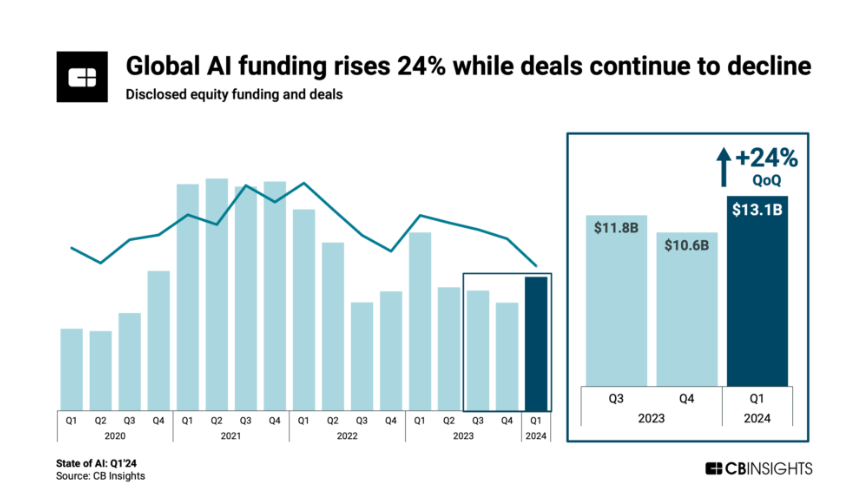
With both VC and acquiring companies cooling their overall appetite for AI companies – is that simply a result of the change in economic conditions, the realization that GenAI’s generative qualities are outpacing the accuracy of its intelligence, and the rapidly evolving regulatory landscape, including the new EU directive?
Or could it be that Quick Fix AI is more marketing than reality? The answer seems to be a blurry line that has led many companies into questionable territory.
As a company considering AI tools as part of your recruiting tech stack, there are some clear tests you should incorporate into your decision-making before jumping in with both feet.
- What is the AI? Is it Automation, Big Data, Machine Learning, Large Language Models, Generative AI, AGI (Artificial General Intelligence), or something else? (By the way, one of these does not exist yet)
- Where is the AI present in the tool, and can it be disabled?
- Can we articulate to our constituents how this AI works and how it will benefit the business and defend the idea that the same task cannot be completed as efficiently with automation tools rather than AI solutions?
- Which AI service (native or one of the options in the market, such as OpenAI, Gemini (formerly Bard), Anthropic (Claude), or Microsoft AI (Azure AI) is the technology leveraging?
- Do we have the right person(s) on staff to evaluate if the AI is ethical and unbiased? How about a third-party auditor, and how do we judge their auditing standards?
- How and with what tools and processes will we conduct annual AI anti-bias audits?
- What are the legal and reputational impacts of a discriminatory AI tool? Consider the reputation damage of Air Canada’s AI Blunder.
In the scheme of things, AI and GenAI, in particular, are nascent in their evolution. Launching in October of 2022 and mass appeal picking up in Q1 of 2023, Gen AI has barely begun its adoption journey. Complicating matters, the accuracy of GenAI, specifically OpenAI and Microsoft’s Azure OpenAI, has taken a massive hit post the New York Times lawsuit and data removal of millions of copyrighted material used to train the AI models, with some saying that the accuracy has dropped from 70% to as low as 40% in some use cases.
Figuring out the best use cases, the right tools or AI, and the right provider is a big job in and of itself. But part of that is understanding what your actual needs are. No one needs AI, but every company has a problem they need or want to solve, and AI might provide one of those answers.
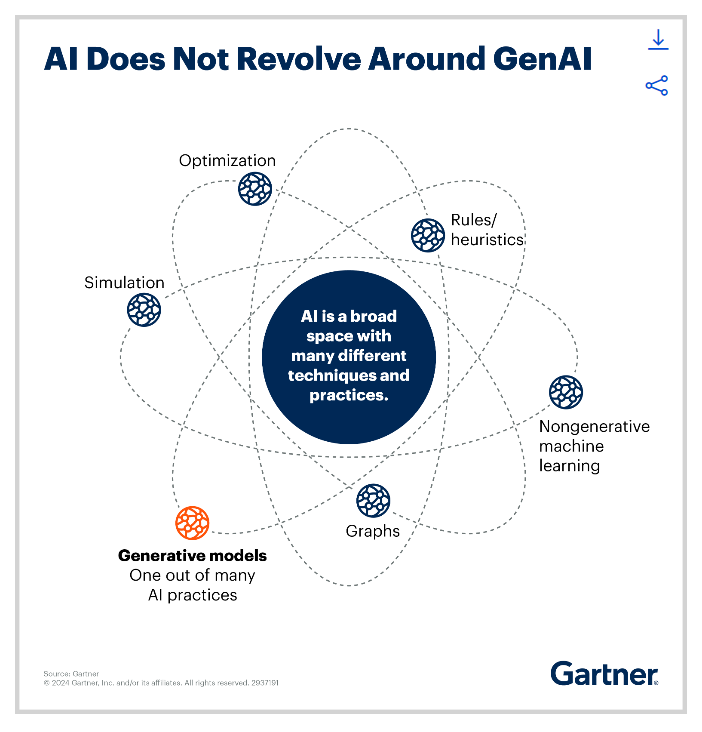
Last month, Google responded with their new take on Gen AI: Gemini. A generative AI provides sourced data as part of the outputs. Google rolled out Gemini Education last month, focusing on a ground-up approach to adoption through schools and universities. The school systems provide a unique microcosm of what is to come.
Students under 13 are not ‘legally’ allowed to use any GenAI services, yet schools are already seeing students turn in work created by Gen AI. But much like when Wikipedia entered the market or when Google released Google Translate, schools are adapting – and companies are as well, first to the hype of Gen AI. Now, as we enter the trough of disillusionment (I like to call it the trough of despair), at some point, the technology and market will sort itself out, and we will start to see the promised 40% increase in productivity.
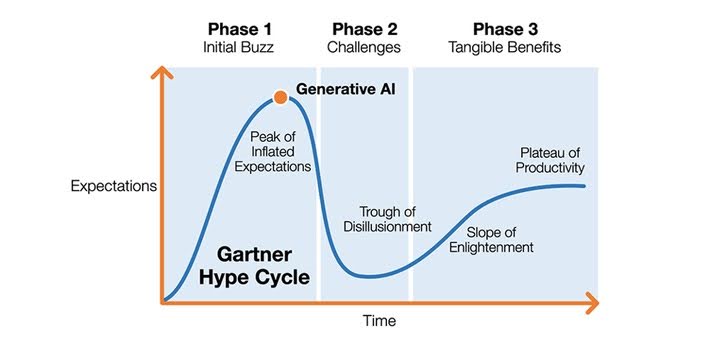
In the meantime, it is probably worth noting that a lot of the marketing “AI” turns out to be rules-based automation, which is getting a real boon from the aircover of AI.
Recent legal battles and industry shifts have underscored the critical need for transparency, ethical considerations, and rigorous evaluations of AI tools. As we navigate challenges surrounding bias, legal frameworks, and the adoption of innovative technologies like Gen AI, making informed decisions and prioritizing ethical practices in recruitment has become imperative.
Going forward, let’s embrace these challenges as opportunities to enhance our recruitment strategies, champion inclusivity, and drive successful outcomes. Together, we can shape a future where technology empowers us to make informed decisions, fosters diversity, and propels us toward sustainable growth. At JobSync, we’re proud to partner with you on the transformative journey toward a more inclusive and efficient hiring process.
Happy Hiring!
Alex Murphy, CEO, JobSync
June Recruitment Roundtable
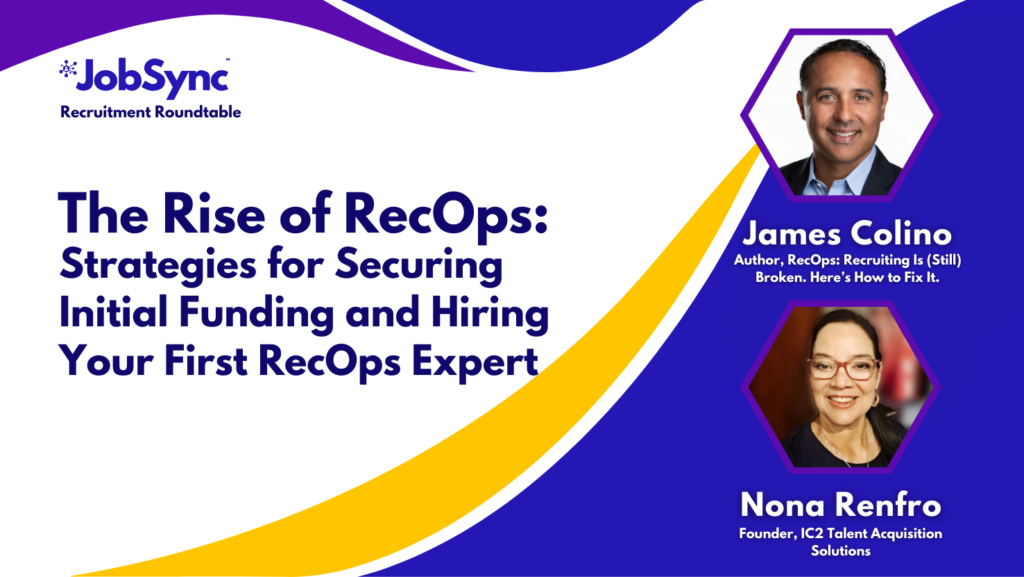
The Rise of RecOps: Strategies for Securing Initial Funding & Hiring Your First RecOps Expert
Our June Recruitment Roundtable discussion featured the founding father of Recruiting Operations, author and industry expert James Colino, and Hiring Operations & DEI thought leader and strategist Nona Renfro. They shared proven strategies for securing initial funding to build a Recruiting Operations function and the key factors in making a successful first Rec Ops hire. Watch Now!
News Articles
Cheaters Get Cheated
The Sync: Rippling, a PEO, is gearing up for a large tender offer for its shares, allowing current and former employees to sell up to 25% of their vested equity, but has banned its former employees currently working at or have worked at after working at Ripping, eight named competitors, including Deel and Workday, from participating. This exclusion is not only unusual but it is also viewed as petty by many and looks to set a poor precedent for future high-growth start-ups.
Mobile-Friendly Goes Mobile Only
The Sync: Starting July 5, 2024, Google will no longer index websites that do not meet their criteria for mobile-friendly viewing (someone should update the documentation, too), emphasizing the importance of providing a seamless mobile experience due to the dominance of mobile web usage. Websites inaccessible to mobile devices will be de-indexed, significantly impacting their traffic and online presence. It’s time to say goodbye to AngleFire (just kidding, even Lycos knows how important mobile is).
JobSync Resources
 Read: Human Capital ROI: Can You Make the Link Between Your People and Your Business Outcomes?
Read: Human Capital ROI: Can You Make the Link Between Your People and Your Business Outcomes?
The Sync: Most traditional talent acquisition and human resources performance metrics, such as cost per hire and turnover rate, don’t predict organizational performance. So, what metrics should you track to quantify the impact of your talent initiatives honestly? Do you really understand the ROI of your Human Capital expenditures? Read our latest blog article to learn more.
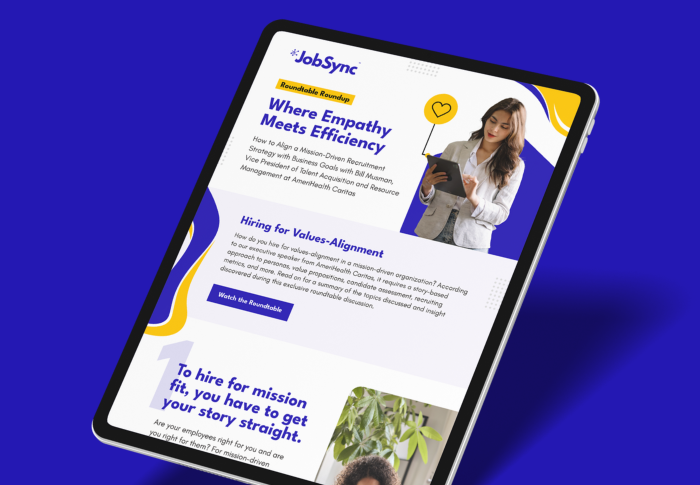
Save: Recruitment Roundtable Infographic – Learn How to Align a Mission-Driven Recruitment Strategy
The Sync: During our May Recruitment Roundtable discussion, we gathered insightful tips and best practices for building a values-aligned workforce to provide this infographic of key strategies for hiring top talent that are mission-driven and mission-aligned with your organization. Click here to download the infographic and share it with your team today.
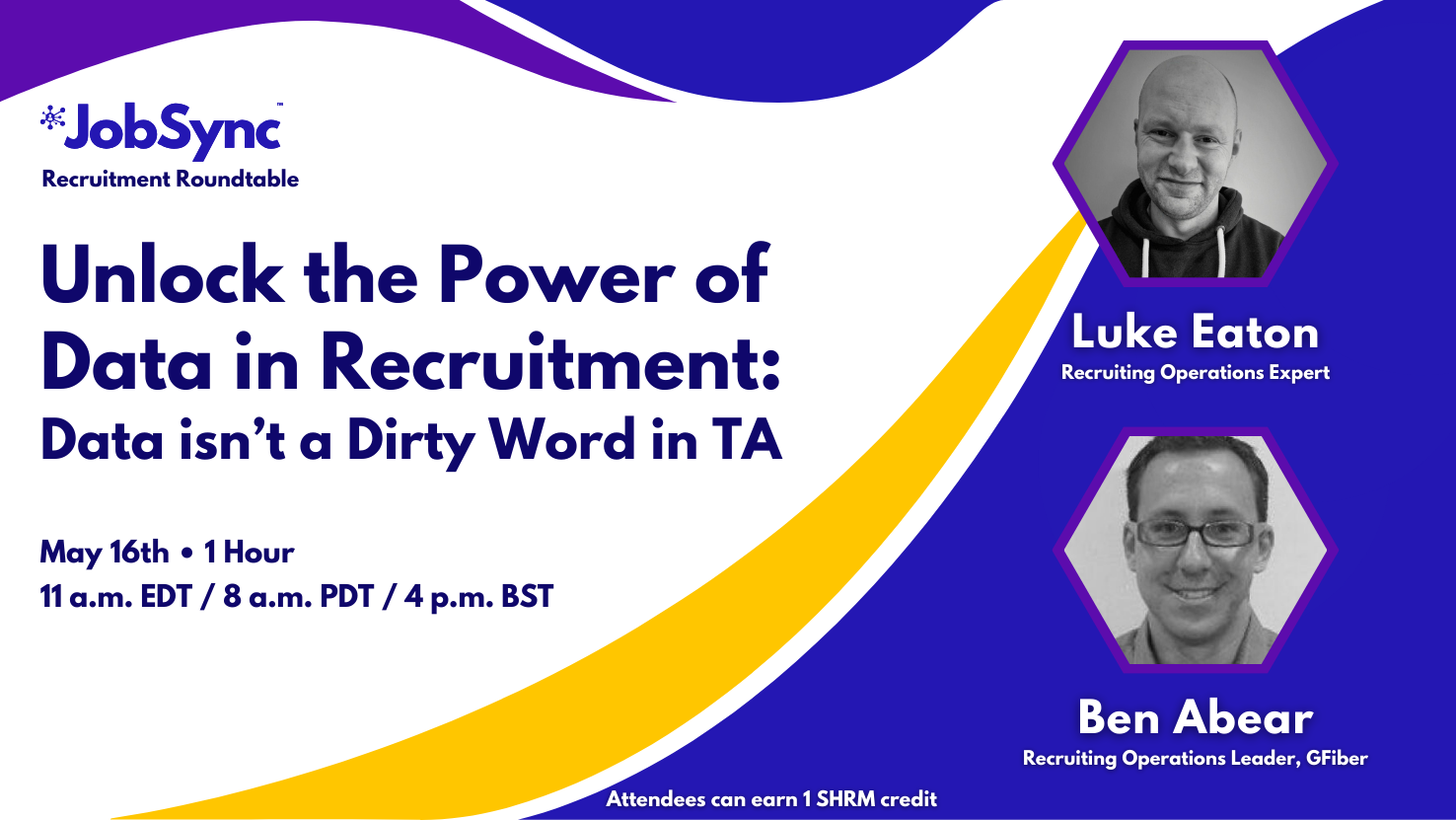 Watch: Unlock the Power of Data in Recruitment: May Recruitment Marketing Roundtable
Watch: Unlock the Power of Data in Recruitment: May Recruitment Marketing Roundtable
The Sync: This insightful roundtable recording on “Data isn’t a Dirty Word in TA,” features Luke Eaton and Ben Abear discussing what you need, when you need it, and how to move business forward using the data you already have while building the infrastructure for the data you need. Watch it now to gain valuable insights on elevating your recruitment data and analytics game.
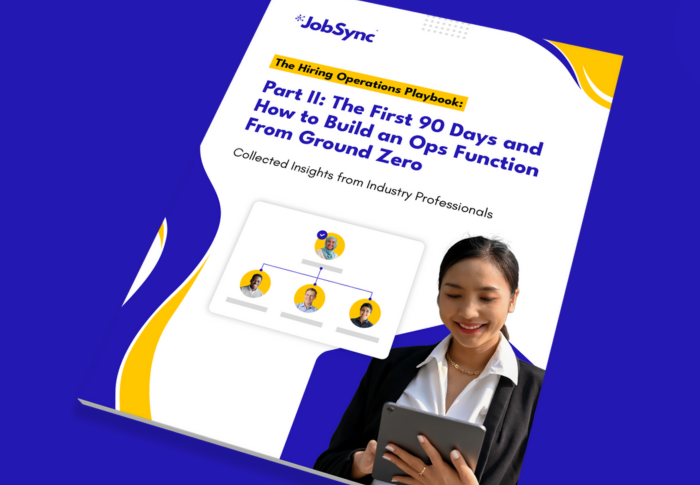 Save: The Hiring Operations Playbook: Building Your Ops Function From the Ground Up
Save: The Hiring Operations Playbook: Building Your Ops Function From the Ground Up
The Sync: The ultimate guide on how to establish a robust Hiring and Recruiting Operations function from scratch, straight from the insights of industry experts who have paved the way in the world of Hiring Operations. You will find strategies, challenges, and successes faced by renowned organizations. Download the playbook today to get started!
Get a Demo
Our demo isn’t just another sales show. You’ll get a real, unscripted look at how we’re making recruitment smoother and faster for companies just like yours. Click here to experience the genuine impact JobSync has on real-life hiring success.

